Featured Non-Fiction & Biography
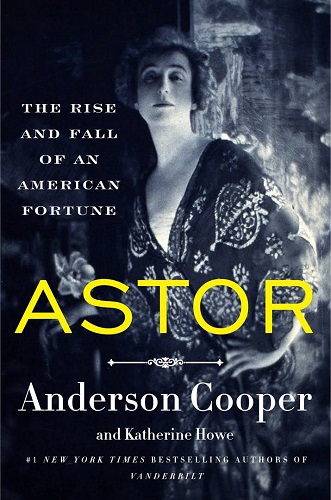
THE LAST DROP OF HEMLOCK
by Katharine Schellman
The number one New York Times bestselling authors of Vanderbilt return with another riveting history of a legendary American family, the Astors, and how they built and lavished their fortune.
The story of the Astors is a quintessentially American story—of ambition, invention, destruction, and reinvention.
From 1783, when German immigrant John Jacob Astor first arrived in the United States, until 2009, when Brooke Astor’s son, Anthony Marshall, was convicted of defrauding his elderly mother, the Astor name occupied a unique place in American society.
The family fortune, first made by a beaver trapping business that grew into an empire, was then amplified by holdings in Manhattan real estate. Over the ensuing generations, Astors ruled Gilded Age New York society and inserted themselves into political and cultural life, but also suffered the most famous loss on the Titanic, one of many shocking and unexpected twists in the family’s story.
In this unconventional, page-turning historical biography, featuring black-and-white and color photographs, #1 New York Times bestselling authors Anderson Cooper and Katherine Howe chronicle the lives of the Astors and explore what the Astor name has come to mean in America—offering a window onto the making of America itself.

LESLIE F*CKING JONES
by Leslie Jones
Hey you guys, it’s Leslie. I’m excited to share my story with you.
Now, I’m gonna be honest: Some of the details might be vague because a b*tch is fifty-five and she’s smoked a ton of weed. But while bits might be a touch hazy, I can promise you the underlying truth is REAL. Whether I’m talking about my childhood growing up in the South, my early stand-up days driving from gig to gig through the darkest parts of our country and praying I wouldn’t get murdered, what Chris Rock told Lorne Michaels, that time I wanted to shoot Whoopi Goldberg on SNL, and yeah, I’ll tell you all about Ghostbusters and the nudes and Supermarket Sweep and The Daily Show . . . I’m sharing it all in these pages. It’s not easy being a woman in comedy, especially when you’re a tall-*ss Black woman with a trumpet voice. I have to fight so that no one takes me for granted, and no one takes advantage. These are the stories that explain why. (Cue the Law & Order theme.)
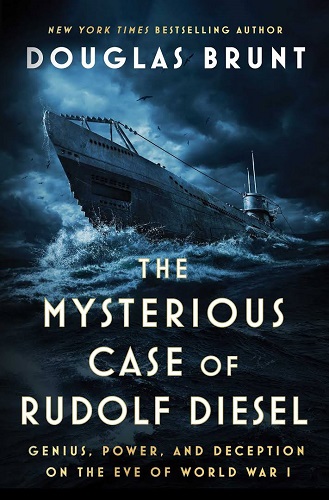

THE MYSTERIOUS CASE OF RUDOLF DIESEL
Douglas Brunt
The hidden history of one of the world’s greatest inventors, a man who disrupted the status quo and then disappeared into thin air on the eve of World War I—this book answers the hundred-year-old mystery of what really became of Rudolf Diesel.
September 29, 1913: the steamship Dresden is halfway between Belgium and England. On board is one of the most famous men in the world, Rudolf Diesel, whose new internal combustion engine is on the verge of revolutionizing global industry forever. But Diesel never arrives at his destination. He vanishes during the night and headlines around the world wonder if it was an accident, suicide, or murder.
After rising from an impoverished European childhood, Diesel had become a multi-millionaire with his powerful engine that does not require expensive petroleum-based fuel. In doing so, he became not only an international celebrity but also the enemy of two extremely powerful men: Kaiser Wilhelm II of Germany and John D. Rockefeller, the founder of Standard Oil and the richest man in the world.
The Kaiser wanted the engine to power a fleet of submarines that would finally allow him to challenge Great Britain’s Royal Navy. But Diesel had intended for his engine to be used for the betterment of mankind and refused to keep the technology out of the hands of the British or any other nation. For John D. Rockefeller, the engine was nothing less than an existential threat to his vast and lucrative oil empire. As electric lighting began to replace kerosene lamps, Rockefeller’s bottom line depended on the world’s growing thirst for gasoline to power its automobiles and industries.
At the outset of this new age of electricity and oil, Europe stood on the precipice of war. Rudolf Diesel grew increasingly concerned about Germany’s rising nationalism and military spending. The inventor was on his way to London to establish a new company that would help Britain improve its failing submarine program when he disappeared.
Now, New York Times bestselling author Douglas Brunt reopens the case and provides an astonishing new conclusion about Diesel’s fate. “Equal parts Walter Isaacson and Sherlock Holmes, The Mysterious Case of Rudolf Diesel yanks back the curtain on the greatest caper of the 20th century in this riveting history” (Jay Winik, New York Times bestselling author).
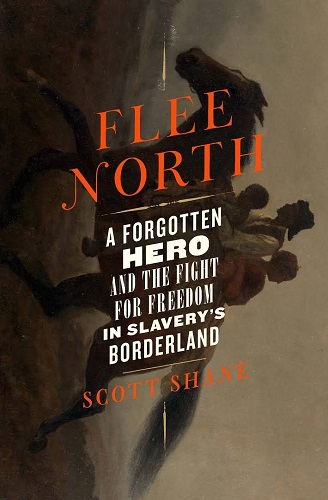

FLEE NORTH
by Scott Shane
A riveting account of the extraordinary abolitionist, liberator, and writer Thomas Smallwood, who bought his own freedom, led hundreds out of slavery, and named the underground railroad, from Pulitzer Prize-winning author and journalist, Scott Shane. Flee North tells the story for the first time of an American hero all but lost to history.
Born into slavery, by the 1840s Thomas Smallwood was free, self-educated, and working as a shoemaker a short walk from the U.S. Capitol. He recruited a young white activist, Charles Torrey, and together they began to organize mass escapes from Washington, Baltimore, and surrounding counties to freedom in the north.
They were racing against an implacable enemy: men like Hope Slatter, the region’s leading slave trader, part of a lucrative industry that would tear one million enslaved people from their families and sell them to the brutal cotton and sugar plantations of the deep south.
Men, women, and children in imminent danger of being sold south turned to Smallwood, who risked his own freedom to battle what he called “the most inhuman system that ever blackened the pages of history.” And he documented the escapes in satirical newspaper columns, mocking the slaveholders, the slave traders and the police who worked for them.
At a time when Americans are rediscovering a tragic and cruel history and struggling anew with the legacy of white supremacy, this Flee North — the first to tell the extraordinary story of Smallwood — offers complicated heroes, genuine villains, and a powerful narrative set in cities still plagued by shocking racial inequity today.


YOUR FACE BELONGS TO US
by Kashmir Hill
The story of a small AI company that gave facial recognition to law enforcement, billionaires, and businesses, threatening to end privacy as we know it
“The dystopian future portrayed in some science-fiction movies is already upon us. Kashmir Hill’s fascinating book brings home the scary implications of this new reality.”—John Carreyrou, author of Bad Blood
Longlisted for the Financial Times and Schroders Business Book of the Year Award
New York Times tech reporter Kashmir Hill was skeptical when she got a tip about a mysterious app called Clearview AI that claimed it could, with 99 percent accuracy, identify anyone based on just one snapshot of their face. The app could supposedly scan a face and, in just seconds, surface every detail of a person’s online life: their name, social media profiles, friends and family members, home address, and photos that they might not have even known existed. If it was everything it claimed to be, it would be the ultimate surveillance tool, and it would open the door to everything from stalking to totalitarian state control. Could it be true?
In this riveting account, Hill tracks the improbable rise of Clearview AI, helmed by Hoan Ton-That, an Australian computer engineer, and Richard Schwartz, a former Rudy Giuliani advisor, and its astounding collection of billions of faces from the internet. The company was boosted by a cast of controversial characters, including conservative provocateur Charles C. Johnson and billionaire Donald Trump backer Peter Thiel—who all seemed eager to release this society-altering technology on the public. Google and Facebook decided that a tool to identify strangers was too radical to release, but Clearview forged ahead, sharing the app with private investors, pitching it to businesses, and offeringit to thousands of law enforcement agencies around the world.
Facial recognition technology has been quietly growing more powerful for decades. This technology has already been used in wrongful arrests in the United States. Unregulated, it could expand the reach of policing, as it has in China and Russia, to a terrifying, dystopian level.
Your Face Belongs to Us is a gripping true story about the rise of a technological superpower and an urgent warning that, in the absence of vigilance and government regulation, Clearview AI is one of many new technologies that challenge what Supreme Court Justice Louis Brandeis once called “the right to be let alone.”


OF TIME AND TURTLES
by Sy Montgomery
National Book Award finalist for The Soul of an Octopus and New York Times bestseller Sy Montgomery turns her journalistic curiosity to the wonder and wisdom of our long-lived cohabitants—turtles—and through their stories of hope and rescue, reveals to us astonishing new perspectives on time and healing.
When acclaimed naturalist Sy Montgomery and wildlife artist Matt Patterson arrive at Turtle Rescue League, they are greeted by hundreds of turtles recovering from injury and illness. Endangered by cars and highways, pollution and poachers, these turtles—with wounds so severe that even veterinarians would have dismissed them as fatal—are given a second chance at life. The League’s founders, Natasha and Alexxia, live by one motto: Never give up on a turtle.
But why turtles? What is it about them that inspires such devotion? Ancient and unhurried, long-lived and majestic, their lineage stretches back to the time of the dinosaurs. Some live to two hundred years, or longer. Others spend months buried under cold winter water. Montgomery turns to these little understood yet endlessly surprising creatures to probe the eternal question: How can we make peace with our time?
In pursuit of the answer, Sy and Matt immerse themselves in the delicate work of protecting turtle nests, incubating eggs, rescuing sea turtles, and releasing hatchlings to their homes in the wild. We follow the snapping turtle Fire Chief on his astonishing journey as he battles against injuries incurred by a truck.
Hopeful and optimistic, Of Time and Turtles is an antidote to the instability of our frenzied world. Elegantly blending science, memoir, philosophy, and drawing on cultures from across the globe, this compassionate portrait of injured turtles and their determined rescuers invites us all to slow down and slip into turtle time.
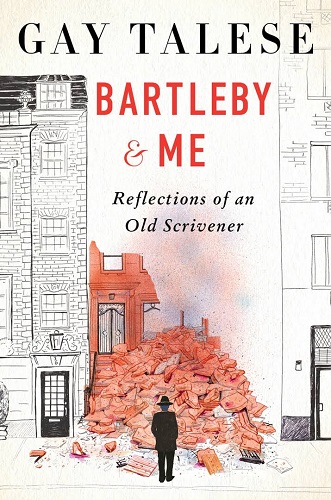

BARTLEBY & ME
by Gay Talese
“Literary Legend” (New York) Gay Talese retraces his pioneering career, marked by his fascination with the world’s hidden characters.
In the concluding act of this gloriously unique capstone book, Talese introduces readers to one final unforgettable story: the strange and riveting all new tale of Dr. Nicholas Bartha, who blew up his Manhattan brownstone—and himself—rather than relinquish his claim to the American dream.
“New York is a city of things unnoticed,” ayoung reporter named Gay Talese wrote sixty years ago. He would spend the rest of his legendary career defying that statement by celebrating the people most reporters overlooked, understanding that it was through these minor characters that the epic story of New York and America unfolded. Inspired by Herman Melville’s great short story “Bartleby, the Scrivener,” Talese now revisits the unforgettable “nobodies” he has profiled in his celebrated career—from the New York Times’s anonymous obituary writer to Frank Sinatra’s entourage. In the book’s final act, a remarkable piece of original reporting titled “Dr. Bartha’s Brownstone,” Talese presents a new “Bartleby,” an unknown doctor who made his mark on the city one summer day in 2006.
Rising within the city of New York are about one million buildings. These include skyscrapers, apartment buildings, bodegas, schools, churches, and homeless shelters. Also spread through the city are more than 19,000 vacant lots, one of which suddenly appeared some years ago—at 34 East 62nd Street, between Madison and Park Avenues—when the unhappy owner of a brownstone at that address blew it up (with himself in it) rather than sell his cherished nineteenth-century high-stoop Neo-Grecian residence in order to pay the court-ordered sum of $4 million to the woman who had divorced him three years earlier. This man was a physician of sixty-six named Nicholas Bartha. On the morning of July 10, 2006, Dr. Bartha filled his building with gas that he had diverted from a pipe in the basement, and then he set off an explosion that reduced the fivestory premises into a fiery heap that would injure ten firefighters and five passersby and damage the interiors of thirteen apartments that stood to the west of the crumbled brownstone.
Talese has been obsessed with Dr. Bartha’s story and spent the last seventeen years examining this single 20 x 100 foot New York City building lot, its serpentine past, and the unexpected triumphs and disasters encountere by its residents and owners—an unlikely cast featuring society wannabes, striving immigrants, Gilded Age powerbrokers, Russian financiers, and even a turncoat during the War of Independence—just as he has been obsessed with similar “nobodies” throughout his career. Concise, elegant, tragic, and whimsical, Bartleby and Me is the valedictory work of a master journalist.
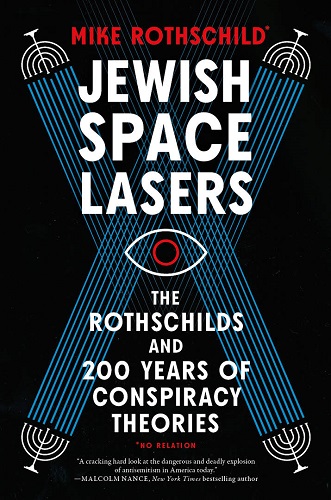

JEWISH SPACE LASERS
by Mike Rothschild
With the current rise of antisemitism, this important book looks at how one Jewish family —the Rothschilds—became a lightning rod for the conspiracy theories of the last two centuries, and how those theories are still very much alive today.
In 2018 Congresswoman Marjorie Taylor Greene took to social media to share her suspicions that the California wildfires were started by ‘space solar generators’ which were funded by powerful, mysterious backers. Instantly, thousands of people rallied around her, blaming the fires on “Jewish space lasers” and, ultimately, the Rothschild family.
For more than 200 years, the name “Rothschild” has been synonymous with two things: great wealth, and conspiracy theories about what they’re “really doing” with it. Almost from the moment Mayer Amschel Rothschild and his sons emerged from the Jewish ghetto of Frankfurt to revolutionize the banking world, the Rothschild family has been the target of myths, hoaxes, bizarre accusations, and constant, virulent antisemitism. Over the years, they have been blamed for everything from the sinking of the Titanic, to causing the Great Depression, and even creating the COVID-19 pandemic.
Jewish Space Lasers: The Rothschilds and 200 Years of Conspiracy Theoriesis a deeply researched dive into the history of the conspiracy industry around the Rothschild family – from the “pamphlet wars” of Paris in the 1840s to the dankest pits of the internet today. Journalist and conspiracy theory expert Mike Rothschild, who isn’t related to the family, sorts out myth from reality to find the truth about these conspiracy theories and their spreaders. Who were the Rothschilds? Who are they today? Do they really own $500 trillion and every central bank, in addition to “controlling the British money supply?” Is any of this actually true? And why, even as their wealth and influence have waned, do they continue to drive conspiracies and hoaxes?
Still Hot in Non-Fiction & Biography
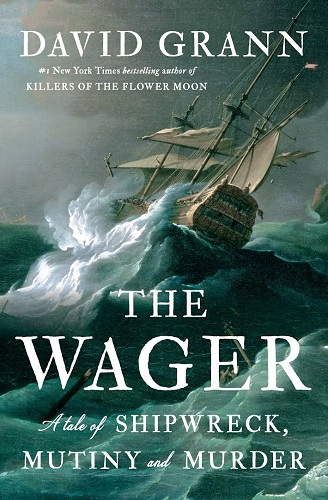

THE WAGER
#1 NEW YORK TIMES BESTSELLER • From the author of Killers of the Flower Moon, a page-turning story of shipwreck, survival, and savagery, culminating in a court martial that reveals a shocking truth. The powerful narrative reveals the deeper meaning of the events on The Wager, showing that it was not only the captain and crew who ended up on trial, but the very idea of empire.
“Riveting…Reads like a thriller, tackling a multilayered history—and imperialism—with gusto.” —Time
“A tour de force of narrative nonfiction.” —The Wall Street Journal
On January 28, 1742, a ramshackle vessel of patched-together wood and cloth washed up on the coast of Brazil. Inside were thirty emaciated men, barely alive, and they had an extraordinary tale to tell. They were survivors of His Majesty’s Ship the Wager, a British vessel that had left England in 1740 on a secret mission during an imperial war with Spain. While the Wager had been chasing a Spanish treasure-filled galleon known as “the prize of all the oceans,” it had wrecked on a desolate island off the coast of Patagonia. The men, after being marooned for months and facing starvation, built the flimsy craft and sailed for more than a hundred days, traversing nearly 3,000 miles of storm-wracked seas. They were greeted as heroes.
But then … six months later, another, even more decrepit craft landed on the coast of Chile. This boat contained just three castaways, and they told a very different story. The thirty sailors who landed in Brazil were not heroes – they were mutineers. The first group responded with countercharges of their own, of a tyrannical and murderous senior officer and his henchmen. It became clear that while stranded on the island the crew had fallen into anarchy, with warring factions fighting for dominion over the barren wilderness. As accusations of treachery and murder flew, the Admiralty convened a court martial to determine who was telling the truth. The stakes were life-and-death—for whomever the court found guilty could hang.
The Wager is a grand tale of human behavior at the extremes told by one of our greatest nonfiction writers. Grann’s recreation of the hidden world on a British warship rivals the work of Patrick O’Brian, his portrayal of the castaways’ desperate straits stands up to the classics of survival writing such as The Endurance, and his account of the court martial has the savvy of a Scott Turow thriller. As always with Grann’s work, the incredible twists of the narrative hold the reader spellbound.
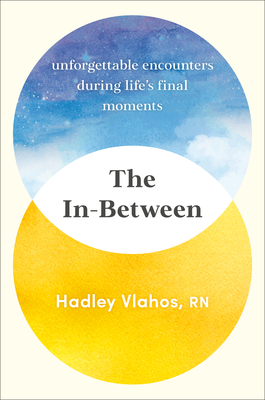

THE IN-BETWEEN
by Hadley Vlahos, RN
NEW YORK TIMES BESTSELLER • Passionate advocate for end-of-life care and TikTok star Hadley Vlahos shares moving stories of joy, wisdom, and redemption from her patients’ final moments in this “brilliant” (Zibby Owens, Good Morning America) memoir.
“This extraordinary book helps dispel fear around death and dying—revealing it to be a natural part of our soul’s evolution.”—Laura Lynne Jackson, New York Times bestselling author of Signs and The Light Between Us
Talking about death and dying is considered taboo in polite company, and even in the medical field. Our ideas about dying are confusing at best: Will our memories flash before our eyes? Regrets consume our thoughts? Does a bright light appear at the end of a tunnel? For most people, it will be a slower process, one eased with preparedness, good humor, and a bit of faith. At the forefront of changing attitudes around palliative care is hospice nurse Hadley Vlahos, who shows that end-of-life care can teach us just as much about how to live as it does about how we die.
Vlahos was raised in a strict religious household, but began questioning her beliefs in high school after the sudden death of a friend. When she got pregnant at nineteen, she was shunned by her community and enrolled herself in nursing school to be able to support herself and her baby. But nursing soon became more than a job: when she focused on palliative care and hospice work, it became a calling.
In The In-Between, Vlahos recounts the most impactful experiences she’s had with the people she’s worked with—from the woman who never once questioned her faith until she was close to death, to the older man seeing visions of his late daughter, to the young patient who laments that she spent too much of her short life worrying about what others thought of her—while also sharing her own fascinating journey.
Written with profound insight, humility, and respect, The In-Between is a heartrending memoir that shows how caring for others can transform a life while also offering wisdom and comfort for those dealing with loss and providing inspiration for how to live now.


POVERTY, BY AMERICA
by Mattrhew Desmond
#1 NEW YORK TIMES BESTSELLER • The Pulitzer Prize–winning author of Evicted reimagines the debate on poverty, making a “provocative and compelling” (NPR) argument about why it persists in America: because the rest of us benefit from it.
“Urgent and accessible . . . Its moral force is a gut punch.”—The New Yorker
The United States, the richest country on earth, has more poverty than any other advanced democracy. Why? Why does this land of plenty allow one in every eight of its children to go without basic necessities, permit scores of its citizens to live and die on the streets, and authorize its corporations to pay poverty wages?
In this landmark book, acclaimed sociologist Matthew Desmond draws on history, research, and original reporting to show how affluent Americans knowingly and unknowingly keep poor people poor. Those of us who are financially secure exploit the poor, driving down their wages while forcing them to overpay for housing and access to cash and credit. We prioritize the subsidization of our wealth over the alleviation of poverty, designing a welfare state that gives the most to those who need the least. And we stockpile opportunity in exclusive communities, creating zones of concentrated riches alongside those of concentrated despair. Some lives are made small so that others may grow.
Elegantly written and fiercely argued, this compassionate book gives us new ways of thinking about a morally urgent problem. It also helps us imagine solutions. Desmond builds a startlingly original and ambitious case for ending poverty. He calls on us all to become poverty abolitionists, engaged in a politics of collective belonging to usher in a new age of shared prosperity and, at last, true freedom.
As an Amazon Associate, we may earn money from qualifying purchases.



